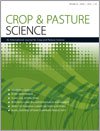Broadleaf break crops improve cereal yield through disease and weed control, increased nitrogen (N) availability and other mechanisms. In the rainfed farming systems of Australia the magnitude of the yield benefit is highly variable, yet is a major driver for adoption of break crops which are often less profitable and more risky than cereals. Declining area of break crops throughout Australia has re-ignited interest in better understanding the circumstances in which break-crop benefits can be maximised from a farming systems perspective. We compiled and analysed a database of 167 crop sequence experiments conducted throughout Western Australia in the period 1974–2007 to evaluate the impact on wheat (Triticum aestivum L.) grain yield from the use of narrow-leafed lupin (Lupinus angustifolius L.), field pea (Pisum sativum L.), canola (Brassica napus L.) or oats (Avena sativa L.), or following a long fallow where no crop had been sown the previous year. Adjusted for the years in which each was represented the average yield benefit to wheat compared with wheat after wheat was 0.60, 0.45, 0.40, 0.35 and 0.30 t/ha following lupin, field pea, canola, oats or fallow, though direct comparisons between break crops could not be made as few experiments (3) included all species. For all break crops, the mean wheat yield increase was independent of the level of wheat yield, representing a step-change rather than a proportional improvement in yield. Analysis of the larger number and spread of lupin experiments revealed that break-crop benefits increased in higher rainfall areas, following higher yielding lupin crops (>1.5 t/ha), and that the break-crop benefit in terms of yield and water-use efficiency increased significantly after 1991. These observations were often related to the level and/or effectiveness of diseases or grass weed control in the break crop; however, increased contribution of fixed N was also likely with better legume crops. For both lupin and field pea, the magnitude of the break-crop response declined as rate of N fertiliser applied to subsequent wheat crop increased, although non-N related benefits (disease and weed control) tended to dominate wheat response to lupin after 1989. Significant break-crop benefits from lupins ( 0.40 t/ha) persisted to a third wheat crop (n = 29) but effects were inconsistent beyond that point. The magnitude, persistence and reliability of the break-crop benefits revealed in this study provide a more accurate framework to assess their likely benefit within the farming system. Further information is required to define the key ‘trigger points’ for the major drivers of the response – water, N, weeds and disease – at which the benefits outweigh the higher risk of these crops and would influence the decision to include them within the system.
How to translate text using browser tools
13 March 2012
Break-crop benefits to wheat in Western Australia – insights from over three decades of research
Mark Seymour,
John A. Kirkegaard,
Mark B. Peoples,
Peter F. White,
Robert J. French
ACCESS THE FULL ARTICLE

Crop and Pasture Science
Vol. 63 • No. 1
March 2012
Vol. 63 • No. 1
March 2012
crop sequence
legume
nitrogen
root disease
rotation




